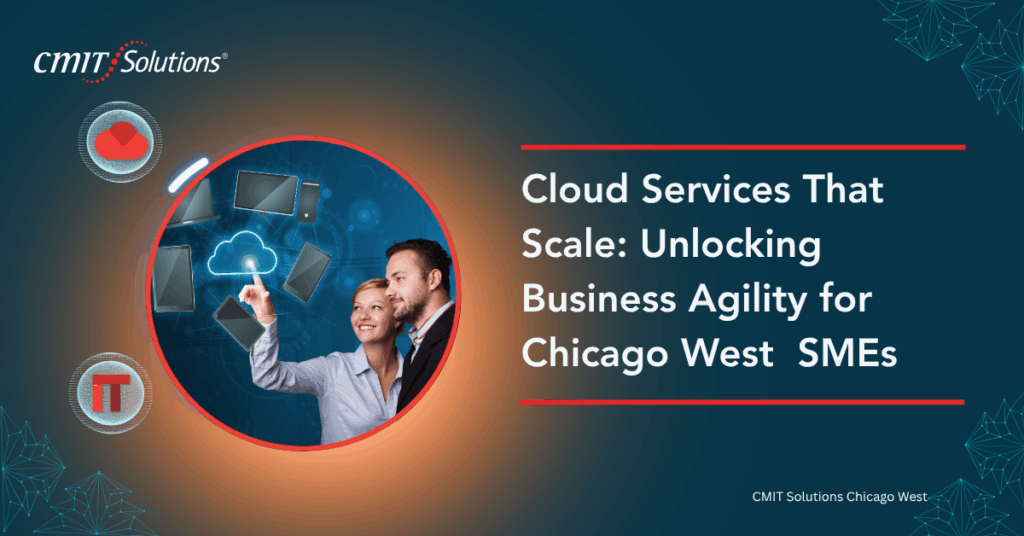In a world where hybrid work models are reshaping the business landscape, companies in Chicago West face both unparalleled opportunities and new operational challenges. Microsoft 365 and Google Workspace have emerged as powerful platforms enabling businesses to adapt and thrive. However, realizing their full potential requires more than just activation—it demands thoughtful integration, strategic optimization, and continuous evolution.
This professional blog outlines the tools, strategies, and best practices necessary to fully leverage Microsoft 365 and Google Workspace for remote, in-office, and blended work environments.
The New Normal: Hybrid Work Defined
Hybrid work isn’t just a passing trend—it’s the future of how teams operate. It blends on-site collaboration with the flexibility of remote engagement. While this model offers enhanced agility, cost savings, and employee satisfaction, it also introduces complexity in IT management, security, communication, and compliance.
Sectors like construction, healthcare, and professional services are adapting their operations to support hybrid setups. IT services for construction play a key role in ensuring real-time collaboration across job sites and back offices.
Microsoft 365 vs. Google Workspace: Which One Wins?
Both suites deliver cloud productivity tools, but they differ in structure, compatibility, and user experience. Understanding these differences helps determine the right fit for your hybrid workforce:
- Microsoft 365 offers advanced security, desktop application strength, and seamless integration with legacy systems. Ideal for firms with existing Windows infrastructure.
- Google Workspace is cloud-native, intuitive, and excels in real-time collaboration. Perfect for fast-moving teams prioritizing agility.
Your business’s existing workflows, security requirements, and user preferences should guide your selection. Explore why companies are rethinking IT strategies to align with hybrid demands.
Mastering Communication: UCaaS Solutions That Work
Communication is the backbone of hybrid work. Microsoft Teams and Google Meet offer comprehensive UCaaS (Unified Communications as a Service) solutions that unify messaging, voice, and video into a single interface.
- Microsoft Teams enables native integration with Word, Excel, SharePoint, and Outlook, streamlining meetings and file sharing.
- Google Meet & Chat integrate within Gmail and Calendar, simplifying access for browser-first users.
For security-conscious businesses, securing communications is critical. Encryption, role-based access, and compliance monitoring ensure that virtual conversations remain confidential.
Smart Storage: Managing Files Across a Distributed Workforce
In a hybrid setup, team members need reliable, always-on access to documents, whether they’re in the office or at home. Microsoft OneDrive and Google Drive offer encrypted storage, version history, and shared access controls.
For industries handling regulated data, such as healthcare or finance, HIPAA-compliant IT is vital. Ensure that your cloud storage setup includes granular permissions, audit trails, and secure collaboration protocols.
Boosting Output: How AI Supercharges Productivity
AI is no longer optional—it’s a productivity accelerator. Hybrid teams using Microsoft Copilot and Google Duet AI can automate tasks, summarize meetings, suggest replies, and even generate content.
- Microsoft 365 uses AI to enhance Excel forecasts, draft emails in Outlook, and auto-summarize Teams meetings.
- Google Workspace leverages AI in Docs, Slides, and Gmail to speed up creation and reduce errors.
Implementing intelligent workplace apps frees up employee bandwidth for strategic work.
Centralized Control: Simplifying IT Across Hybrid Teams
With endpoints now distributed across locations, IT leaders need robust administrative controls. Both Microsoft 365 and Google Workspace provide dashboards to manage users, devices, apps, and policies.
Partnering with local MSPs enhances centralized IT management with customized, hands-on service and rapid response times.
Compliance in a Decentralized World
Staying compliant in a hybrid model means managing risk proactively. Tools like Microsoft Purview and Google Vault help companies retain, discover, and audit sensitive information.
For SMBs, maintaining IT compliance includes:
- Data classification and retention
- Access logging
- Regulatory reporting
These features are critical in healthcare, legal, and financial sectors.
Disaster Recovery: Always Be Prepared
Cyberattacks, accidental deletions, and service outages threaten business continuity. Hybrid teams must adopt robust backup and disaster recovery protocols.
Microsoft and Google offer native backup solutions, but layering third-party tools ensures data redundancy. For complete cyber resilience, test recovery plans regularly.
Built for Growth: Scalable Cloud Solutions
Cloud platforms enable businesses to scale resources, users, and applications on demand. This elasticity supports:
- Seasonal staffing
- Departmental expansions
- Project-specific workloads
With cloud services that scale, small businesses can compete with enterprise capabilities without incurring unnecessary costs.
Infrastructure Matters: Modern Foundations for Hybrid Work
Digital transformation requires more than software. Investing in next-gen infrastructure (fiber, Wi-Fi 6, SD-WAN) improves performance and reliability.
Innovative IT infrastructure ensures your cloud apps deliver consistently, regardless of employee location.
Build Smarter Teams with Targeted Training
Hybrid tools are only as effective as the people using them. Ongoing training empowers employees to leverage new features, follow security protocols, and troubleshoot minor issues independently.
Use a digital transformation playbook to develop structured onboarding, learning paths, and skill development plans.
Stay Agile: IT Strategy Should Evolve
The most successful hybrid workplaces revisit their IT strategies quarterly. Evaluate current tool usage, gather team feedback, and measure against business goals.
Optimize tools and policies based on findings to avoid stagnation. Managed IT services play a pivotal role in continuous improvement.
Seamless Migrations: Moving to Windows 11
Windows 11 offers performance, security, and interface improvements—perfect for hybrid setups. Streamlined migrations with cloud backups, device provisioning, and user profiles ensure minimal disruption.
Use expert migration tips to guide your transition.
Accelerate Innovation with Low-Code Tools
Modern productivity suites now support no-code and low-code development. Microsoft Power Apps and Google AppSheet enable citizen developers to create business solutions quickly.
Low-code platforms reduce dependency on developers, enabling teams to innovate faster.
Looking Ahead: The Hybrid Workplace of the Future
Microsoft 365 and Google Workspace continue to evolve. New features are launched regularly, security standards rise, and collaboration becomes increasingly intuitive.
Staying competitive in the hybrid era means adopting strategic IT practices and reevaluating them regularly.
Final Thoughts
Microsoft 365 and Google Workspace are more than email and document editing tools—they’re essential pillars of modern business operations. When optimized and supported by localized expertise, these platforms unlock unmatched efficiency, security, and scalability.
For businesses in Chicago West, partnering with IT professionals who understand the nuances of hybrid work is key to unlocking success.
Need help optimizing your hybrid tools? Reach out to your trusted local experts to turn potential into performance.






